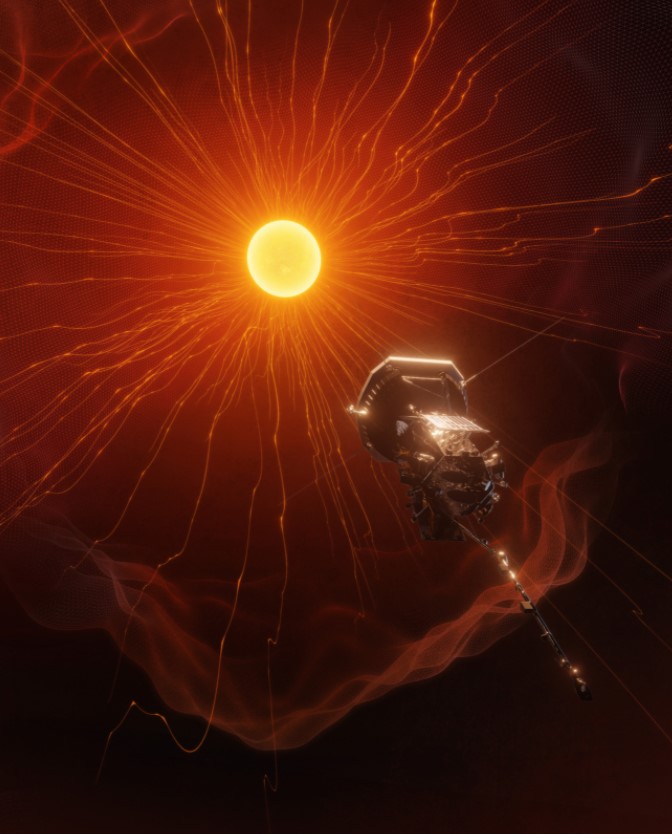For the first time ever, a spacecraft has flown through the Sun’s outer atmosphere. The Parker Solar Probe passed through the out portion of the Sun’s corona in April of 2021, passing directly through streamers of solar plasma.
And by the way …. there’s video of what the spacecraft “saw.”
This movie shows data from the spacecraft’s WISPR (Wide-field Imager for Parker Solar PRobe) instrument, during another pass in August 2021. Not only are the solar particles and dust visible streaming past the spacecraft, astronomer Karl Battams confirmed that other objects visible in the video are Mercury, Venus, THE MILKY WAY (the large vertical structure seen in the video, which is stunning/jarring when you realize it) then Saturn, Earth and Jupiter.
The initial data of breaching the corona came from Parker’s close pass on April 28, 2021, during its eighth flyby of the Sun, traveling at an incredible 142 km per second. While it was 18.8 solar radii (8.127 million miles) above the solar surface itself, the spacecraft flew through the part of the corona that is visible during a solar eclipse.
“We see evidence of being in the corona from magnetic field data, solar wind data, and visually in white-light images,” said Nour Raouafi, the Parker Solar Probe project scientist, in a press release from in the Johns Hopkins Applied Physics Lab.
The Sun’s corona is made of superheated gases that are bound to the Sun by gravity and magnetic forces. As that material gets pushed away from the Sun by rising heat and pressure, it reaches a point where the gravitational forces and magnetic fields are too weak to contain it.
That point is known as the Alfvén critical surface, and until now, researchers were unsure exactly where that point was. But from data sent back by Parker, researchers knew from the specific magnetic and particle conditions that the spacecraft had breached that point, finally entering the solar atmosphere.
“We were fully expecting that, sooner or later, we would encounter the corona for at least a short duration of time,” said Justin Kasper, lead author on a new paper in Physical Review Letters, and deputy chief technology officer at BWX Technologies Inc. “But it is very exciting that we’ve already reached it.”
Researchers are still working on understanding the data, and have unraveled clues about some bizarre S-shaped kinks in the solar wind’s magnetic field lines, called switchbacks, which appear to put charged particles on a zig-zag path as they escaped the Sun. They are also hoping to resolve a longstanding solar mystery about how the corona is heated to millions of degrees, hotter than the Sun itself.
While saying that the Parker Solar Probe “touched the Sun” might be a bit of hyperbole, the spacecraft has since come closer to the Sun as it spirals in an ever-tightening orbit. Parker’s latest closest pass came on November 21st, as part of its 10th circuit of the Sun, where it passed just 5.3 million miles from the solar surface. Data from that pass will be sent to Earth starting on December 23rd.
During the next four years, Parker will eventually reach as close as 8.86 solar radii (3.83 million miles) from the surface. The researchers say the next close flyby in January 2022 will likely bring the spacecraft through the corona again.
Lead image caption: Artist’s impression of Parker Solar Probe approaching the Alfvén critical surface, which marks the end of the solar atmosphere and the beginning of the solar wind. Parker Solar Probe’s crossing into this zone in April 2021 means the spacecraft has “touched the Sun” for the first time. Credit: NASA/Johns Hopkins APL/Ben Smith

